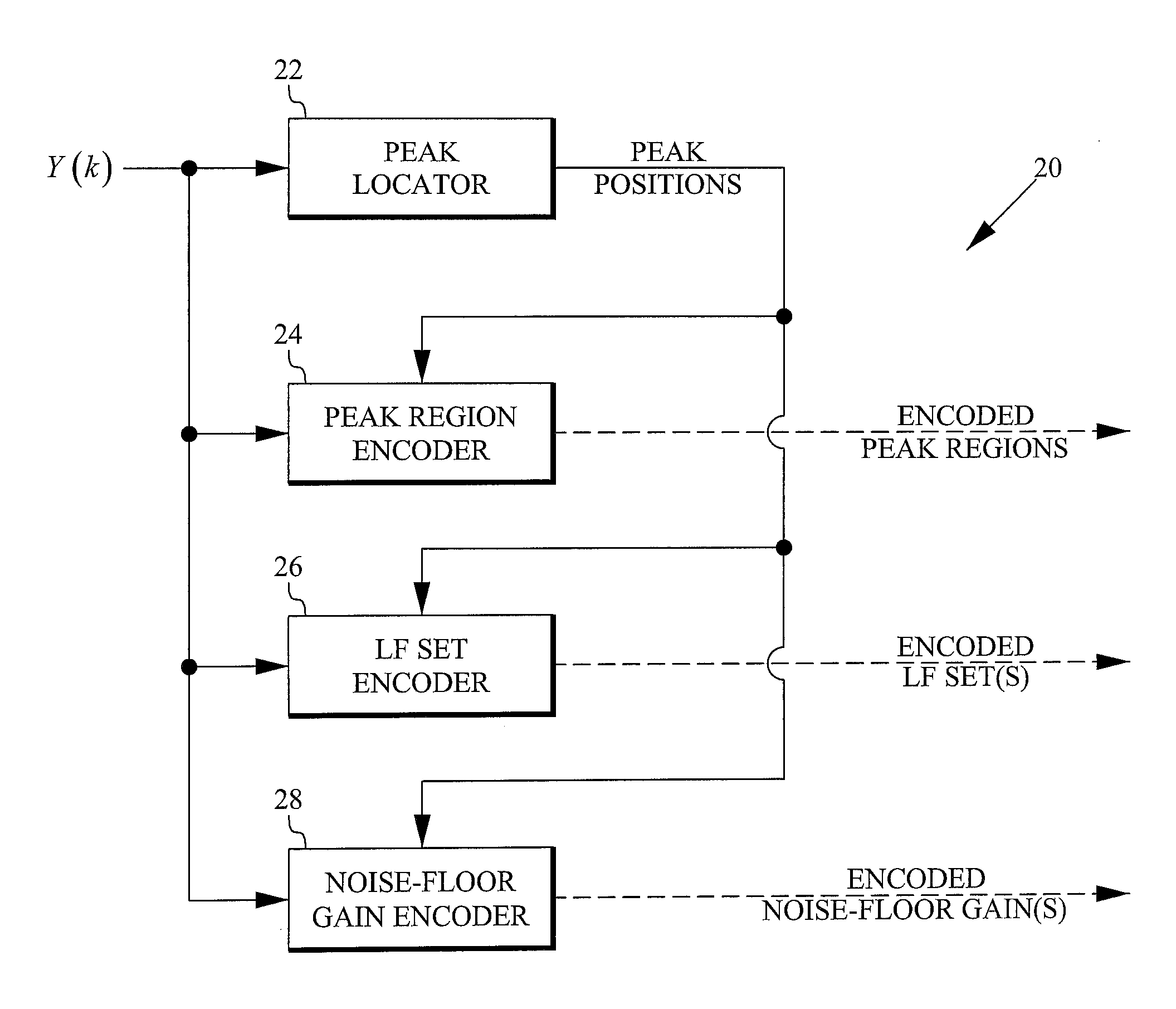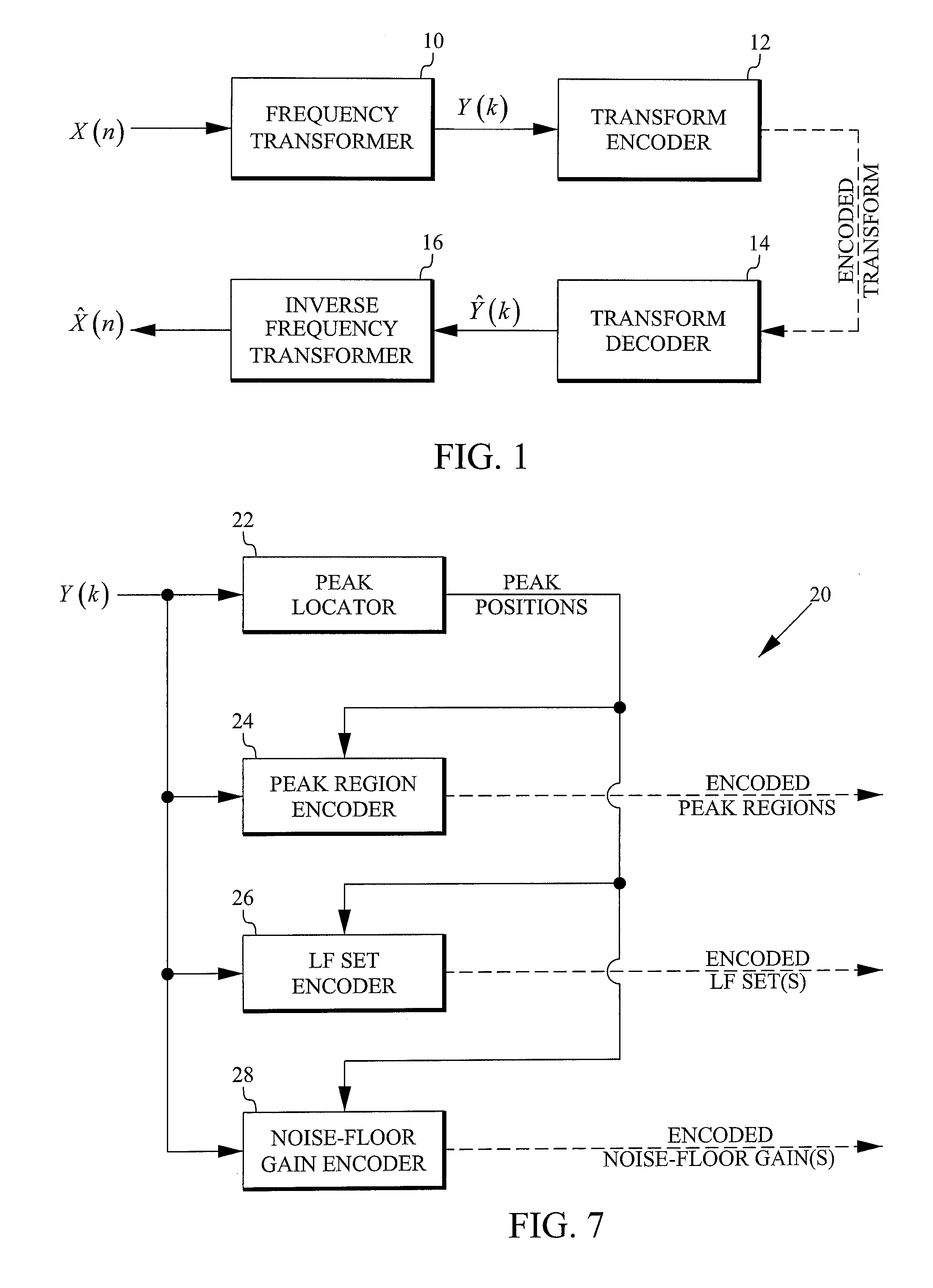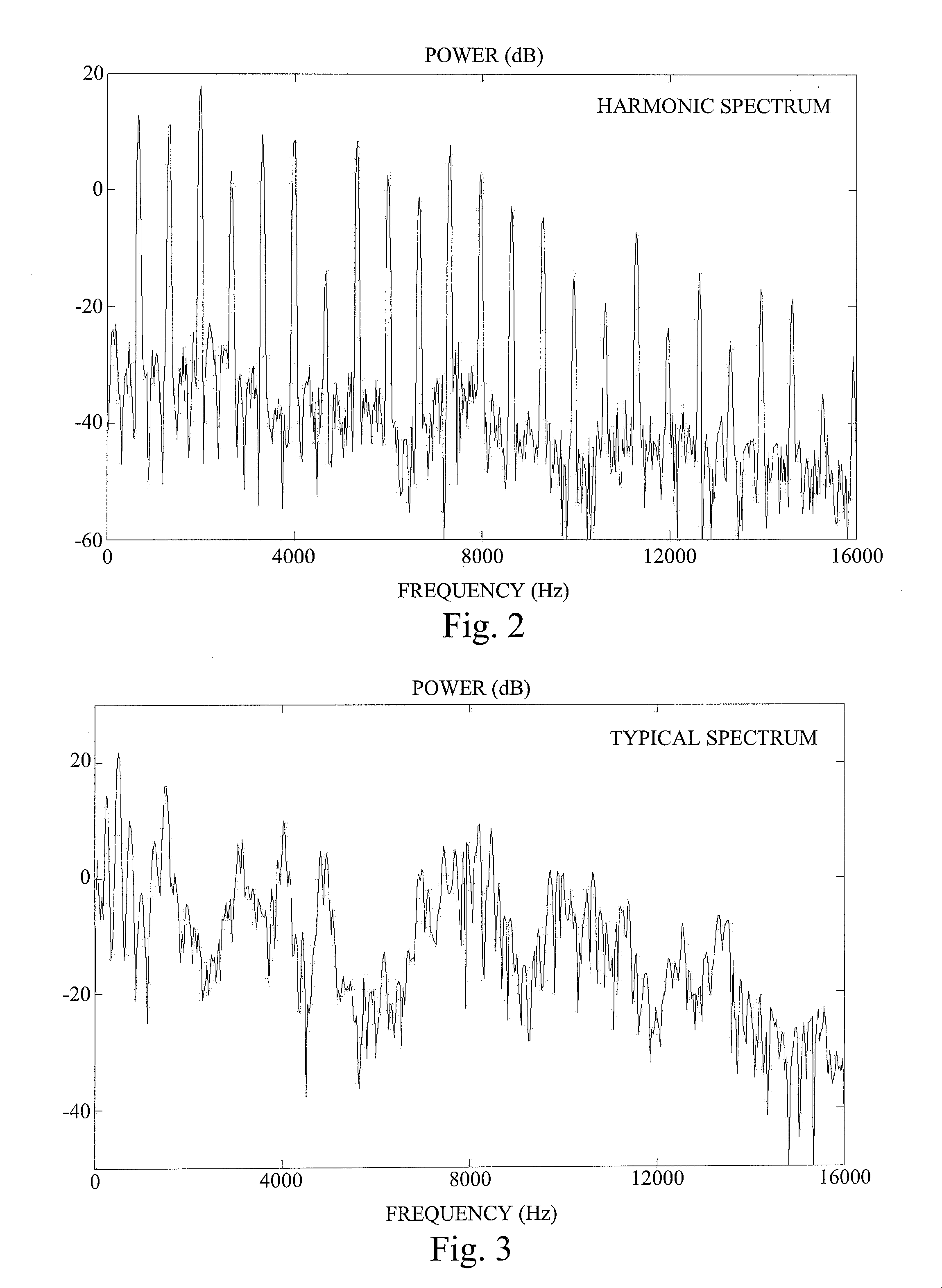Transform Encoding/Decoding of Harmonic Audio Signals
a technology of harmonic audio signal and transform encoding, applied in the field of transform encoding/decoding of harmonic audio signal, can solve the problems of inadequacies, single instruments, and inability to produce acceptable quality residual encoding schemes, and achieve the effect of improving perceptual quality
- Summary
- Abstract
- Description
- Claims
- Application Information
AI Technical Summary
Benefits of technology
Problems solved by technology
Method used
Image
Examples
Embodiment Construction
[0054]FIG. 2 illustrates a typical spectrum of a harmonic audio signal, and FIG. 3 illustrates a typical spectrum of a non-harmonic audio signal. The spectrum of the harmonic signal is formed by strong spectral peaks separated by much weaker frequency bands, while the spectrum of the non-harmonic audio signal is much smoother.
[0055]The proposed technology provides an alternative audio encoding model that handles harmonic audio signals better. The main concept is that the frequency transform vector, for example an MDCT vector, is not split into envelope and residual part, but instead spectral peaks are directly extracted and quantized, together with neighboring MDCT bins. At high frequencies, low energy coefficients outside the peaks neighborhoods are not coded, but noise-filled at the decoder. Here the signal model used in the conventional encoding, {spectrum envelope+residual} is replaced with a new model {spectral peaks+noise-floor}. At low frequencies, coefficients outside the pe...
PUM
 Login to view more
Login to view more Abstract
Description
Claims
Application Information
 Login to view more
Login to view more - R&D Engineer
- R&D Manager
- IP Professional
- Industry Leading Data Capabilities
- Powerful AI technology
- Patent DNA Extraction
Browse by: Latest US Patents, China's latest patents, Technical Efficacy Thesaurus, Application Domain, Technology Topic.
© 2024 PatSnap. All rights reserved.Legal|Privacy policy|Modern Slavery Act Transparency Statement|Sitemap



